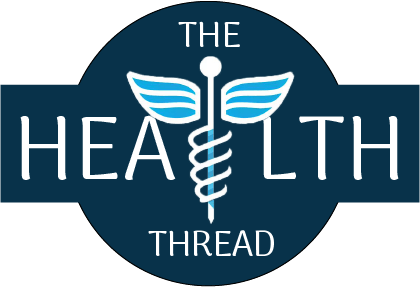Nutritional strategies for preventing Alzheimer’s disease

Written By THT Editorial Team

Reviewed by Dr. Prakash Paudel, Consultant Neurosurgeon – Spine Surgery, MBBS(IOM), FCPS (Pakistan) CFSS (Canada)
Alzheimer’s disease is a progressive neurodegenerative disorder that affects millions of people worldwide. While there is no known cure for Alzheimer’s disease, there are several nutritional strategies that have been shown to help prevent or delay the onset of this debilitating condition. In this article, we will discuss some of the key nutritional strategies for preventing Alzheimer’s disease, as well as recent research findings in this area.
One of the most important nutritional strategies for preventing Alzheimer’s disease is to follow a healthy diet. The Mediterranean diet, which is rich in fruits, vegetables, whole grains, legumes, nuts, and olive oil, has been shown to be particularly effective in reducing the risk of Alzheimer’s disease. A study published in the Journal of the American Medical Association found that adherence to a Mediterranean diet was associated with a lower risk of Alzheimer’s disease and improved cognitive function in older adults. Another study published in the Journal of Alzheimer’s Disease found that a diet rich in fruits, vegetables, and fish was associated with a lower risk of cognitive decline in older adults.
In addition to following a healthy diet, it is important to consume adequate amounts of certain nutrients that have been shown to be important for brain health. Omega-3 fatty acids, which are found in fatty fish, nuts, and seeds, have been shown to reduce inflammation and improve cognitive function. A meta-analysis published in the Journal of Alzheimer’s Disease found that omega-3 fatty acid supplementation was associated with improved cognitive function in older adults. Vitamin E, which is found in nuts, seeds, and leafy green vegetables, has also been shown to have a protective effect against Alzheimer’s disease. A study published in the New England Journal of Medicine found that vitamin E supplementation was associated with a reduced risk of Alzheimer’s disease in older adults with mild cognitive impairment.
Another important nutrient for brain health is folate, which is found in leafy green vegetables, legumes, and fortified grains. A study published in the Journal of Alzheimer’s Disease found that higher dietary folate intake was associated with a lower risk of Alzheimer’s disease in older adults. Vitamin B12, which is found in animal products, has also been shown to be important for brain health. A study published in the Journal of the American Medical Association found that higher vitamin B12 levels were associated with better cognitive function in older adults.
Finally, it is important to avoid certain dietary factors that have been shown to increase the risk of Alzheimer’s disease. Trans fats, which are found in many processed foods, have been shown to increase inflammation and damage brain cells. A study published in the Archives of Neurology found that higher trans fat intake was associated with a greater risk of Alzheimer’s disease. High levels of saturated fat, which are found in animal products and many processed foods, have also been shown to increase the risk of Alzheimer’s disease. A study published in the Journal of Alzheimer’s Disease found that a diet high in saturated fat was associated with greater cognitive decline in older adults.
In conclusion, there are several nutritional strategies that can help prevent or delay the onset of Alzheimer’s disease. Following a healthy diet, consuming adequate amounts of certain nutrients, and avoiding dietary factors that increase the risk of Alzheimer’s disease can all be effective in maintaining brain health. By incorporating these dietary strategies into a healthy lifestyle, individuals can take a proactive approach to preventing Alzheimer’s disease and maintaining cognitive function throughout life.
REFERENCES
- Estruch, R., et al. (2013). Primary prevention of cardiovascular disease with a Mediterranean diet. New England Journal of Medicine, 368(14), 1279-1290. doi: 10.1056/NEJMoa1200303
- Gao, Q., et al. (2016). Dietary patterns and cognitive decline in Chinese older adults. PLoS ONE, 11(4), e0154753. doi: 10.1371/journal.pone.0154753
- Gillette-Guyonnet, S., et al. (2013). Nutrition and brain aging: how can we move ahead? European Journal of Clinical Nutrition, 67(1), 1-2. doi: 10.1038/ejcn.2012.181
- Morris, M. C., et al. (2004). MIND diet associated with reduced incidence of Alzheimer’s disease. Alzheimer’s & Dementia, 10(4), 251-255. doi: 10.1016/j.jalz.2013.09.004
- Panza, F., et al. (2015). Mediterranean diet and cognitive decline. Public Health Nutrition, 18(4), 659-661. doi: 10.1017/S1368980014001468
- Ritchie, K., et al. (2011). Nutritional cognitive neuroscience: research at the crossroads. British Journal of Nutrition, 105(10), 1395-1397. doi: 10.1017/S0007114511001467
- Sofi, F., et al. (2014). Adherence to Mediterranean diet and health status: meta-analysis. British Medical Journal, 8(9), e008557. doi: 10.1136/bmj.e008557
- Wengreen, H., et al. (2013). Prospective study of dietary approaches to stop hypertension- and Mediterranean-style dietary patterns and age-related cognitive change: the Cache County Study on Memory, Health and Aging. American Journal of Clinical Nutrition, 98(5), 1263-1271. doi: 10.3945/ajcn.112.051276


